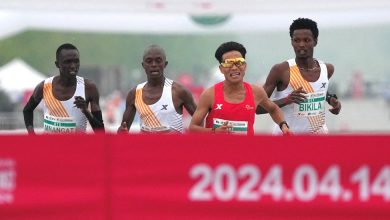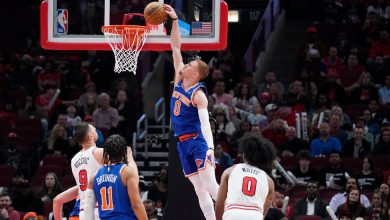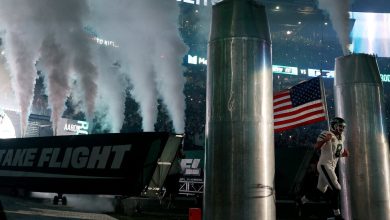Plagiarism Scandal Puts Renowned Concussions Doctor Under Scrutiny

For more than two decades, Paul McCrory has been the world’s foremost doctor shaping the concussion protocols that are used by sports leagues and organizations globally.
As the leader of the Concussion in Sport Group, McCrory helped choose the members of the international group and write its quadrennial consensus statement on the latest research on concussions — a veritable bible for leagues, trainers, doctors and academics that an N.F.L. spokesman once called “the foundation of all sports-related research.”
But McCrory’s status as a leading gatekeeper for concussion treatment and research is under attack as he faces multiple accusations that he plagiarized other scientists, including in articles for a medical journal that he edited. He has denied intentionally lifting copy without credit, and has called one since-retracted piece an “isolated and unfortunate incident.”
The scandal facing the pre-eminent doctor, who has long cast doubt on the legitimacy of C.T.E., or chronic traumatic encephalopathy, has raised questions about his relationship to sports leagues and the influence they may have in shaping how the research on brain trauma is interpreted.
“It’s concerning because he’s taken the lead on writing a consensus statement that is so influential, and we should have access to his insights,” said Kathleen Bachynski, who teaches public health at Muhlenberg College and has written about head trauma in sports. “McCrory’s research agenda and published statements and work as an expert witness come from a point of view of minimizing C.T.E.”
McCrory’s prominence grew as sports leagues looked for consensus on concussions.
McCrory’s rise to power in concussion circles is notable partly because he is based in Australia, far from the research centers studying head trauma in Europe and America. A neurologist at the Florey Institute of Neuroscience and Mental Health, McCrory worked for 15 years as a team doctor for the Collingwood Football Club, an Australian rules football team in Melbourne, beginning around 1990. He came to advise the Australian Football League, as well as Formula 1 racing, boxing, soccer, rugby and a who’s who of sports organizations, including the International Olympic Committee, FIFA and the International Ice Hockey Federation, at the turn of the century.
He expanded his influence by writing hundreds of journal articles, often based on other doctors’ research, not his own, and by editing the British Journal of Sports Medicine from 2001 to 2008, which allowed him to write editorials and help decide which articles were published.
McCrory’s stature grew globally because of his position with the Concussion in Sport Group. He rarely speaks in the news media, which he accused of distorting the dangers of concussions in a way that “creates a sense of fear,” and has taken shots at researchers at Boston University who have done the most work on C.T.E., calling the effects of concussions “transitory.”
Peter Jess, who represents former Australian Football League players fighting for benefits, has battled McCrory and the league for years. Jess said McCrory casts doubt on C.T.E. by suggesting that players’ neurological problems may stem from alcohol or drug abuse, or genetics.
Jess compared McCrory’s approach to the “big tobacco playbook,” and questioned whether McCrory’s connections to sports leagues influenced his judgment.
McCrory was a founding member of the concussion group, which issued its first consensus statement at a 2001 meeting organized by the International Ice Hockey Federation, the I.O.C. and FIFA. As the sports world became increasingly aware of research on the long-term effects of concussions in the middle of the last decade, leagues looked for recommendations from the group, which billed itself as scientific leaders offering a consensus on the latest research.
“Meanwhile, sport was happy to let this fly as these were ‘independent experts and leaders in concussion’ providing them with industry standards for concussion management,” said Willie Stewart, a neuropathologist at Queen Elizabeth University Hospital in Glasgow who runs the largest sports-related brain bank in Europe.
The first consensus statement released by the concussion group, in 2001, had 10 authors. By 2016, when the fifth and most recent statement was issued, the list of authors had grown to 36 and included Richard Ellenbogen, a co-chairman of the N.F.L.’s head, neck and spine committee at the time, and Allen Sills, who became chief medical officer of the league in 2017.
But as the group’s impact grew, more of its members were supported by the sports leagues the group was meant to advise. Those relationships prompted critics to question whether the group could truly offer a rigorous and unbiased interpretation of the research on head trauma.
“There’s no basis to say it’s a consensus, it’s a consensus of people who were given a lot of money to do this,” said David Michaels, a former assistant secretary of labor for the Occupational Safety and Health Administration and the author of “The Triumph of Doubt: Dark Money and the Science of Deception.” “It doesn’t mean they’re intentionally hiding the truth. But we know that financial self-interest blinds them to what’s there.”
Plagiarism accusations called McCrory’s credibility into question.
The first accusation of plagiarism against McCrory was for an editorial he wrote in 2005 for the British Journal of Sports Medicine, which he edited at the time. But Steve Haake, a professor of sports engineering in Sheffield, England, noticed that about half the piece was lifted from an article Haake published five years earlier in Physics World.
That publication did not pursue the matter. Last year, Haake raised the issue with the British Journal of Sports Medicine, which eight months later, on Feb. 28, retracted McCrory’s piece because of “unlawful and indefensible breach of copyright.”
Haake was not satisfied.
“I would like there to be some punishment for such blatant plagiarism, as there is for students,” Haake wrote on the website Retraction Watch. “If anyone can steal our words at any time and get away with it, what’s the point?”
McCrory did not respond to a request for comment, but he told Retraction Watch that the instance of plagiarism was “isolated.” By then, Nick Brown, a doctor who runs a popular blog documenting flaws in published research, had unearthed two more papers McCrory published in the British Journal that had potentially been plagiarized. McCrory said that in one, the draft of the article was uploaded prematurely and that he had asked the journal to retract the piece. In the other, he said, the typesetting did not include the necessary quotation marks.
“In both cases, the errors were not deliberate or intentional but nevertheless require redress as what has been published is plagiarism,” McCrory told Retraction Watch. “Once again I apologize for my error.”
Since then, Brown posted what he said were even more cases of McCrory lifting wholesale the work of other writers. Chris Nowinski, a co-founder of the Concussion Legacy Foundation, cited other examples of McCrory distorting data from researchers at Boston University to play down the seriousness of C.T.E.
“I have never seen anyone make the mistakes that McCrory has made in referencing our studies, including members of the media without medical training, bloggers or even laypersons on their social media accounts,” Nowinski wrote.
A spokeswoman for the company that publishes the British Journal of Sports Medicine said the publication is “currently looking into the allegations and will investigate and act accordingly.”
With accusations of plagiarism mounting, McCrory resigned this month from the concussion group. Last week, the medical regulator in Australia acknowledged McCrory was barred from performing “neurodiagnostic procedures” in May 2018, without providing a reason. Jess said McCrory had examined 10 of his clients after the ban.
McCrory’s employer, the Florey Institute, said in a statement that his articles were published in 2005, before he joined the institute, but that the institute “treats all matters concerning scientific integrity with the utmost seriousness.” A spokeswoman declined to say if McCrory would be penalized.
Spokesmen for FIFA and World Rugby said they were reviewing their relationship with the concussion group. The Australian Football League no longer has formal ties to McCrory, but it still works with three of McCrory’s allies who also signed the latest consensus statement. The league did not respond to a request for comment.
For now, the concussion group says it will continue its “work and concentrate on the scientific content of the consensus conference” to be held this fall in Amsterdam, said Jiri Dvorak, a former chief medical officer at FIFA and founding member of the group.
Insiders recommend reforms for the concussion group.
The charges of plagiarism are the most serious at undermining McCrory’s credibility on the long-term effects of repeated head hits and C.T.E., and some say they may force sports organizations to reconsider the guidelines he and the other doctors in the group set forth.
“There’s an insider cabal that the consensus statement enshrines in respectability,” said Stephen Casper, who has written about the history of head trauma in sports, was an expert witness for former N.H.L. players in a concussion lawsuit and is a witness in cases against the N.C.A.A., Rugby League and Rugby Union. “The authors will all have the taint of McCrory.”
Overhauling the concussion group, though, will be hard because from the start it has been supported by organizations that see head trauma as an existential threat. The group is not an independent body with open elections or a rotation of experts, and even with McCrory’s departure there remain many of his allies who also advised, worked for or received research grants from FIFA, the I.O.C., the N.F.L., the N.H.L. and other organizations.
Still, some members see a chance for the group to become more transparent about potential conflicts of interest, publicly answer questions about its conclusions and incorporate views from neuropathologists, public health specialists and epidemiologists that better reflect the science of C.T.E.
“With Paul no longer a member of the group, the opportunity is there,” said Robert Cantu, a charter member of the group and a neurosurgeon at the Center for the Study of Traumatic Encephalopathy at Boston University.
Bachynski signed an editorial in the Journal of Law, Medicine & Ethics in 2021 calling on the concussion group to become more transparent. She agues that cutting ties to the sports organizations that fund the group is also critical.
As an example, she said, “We in public health have a really strict rule that we aren’t going to take our health care guidance from a Philip Morris-funded health care organization” about tobacco.



